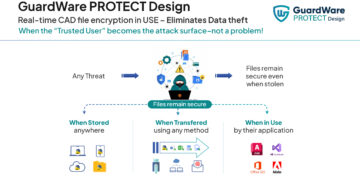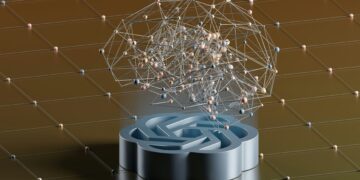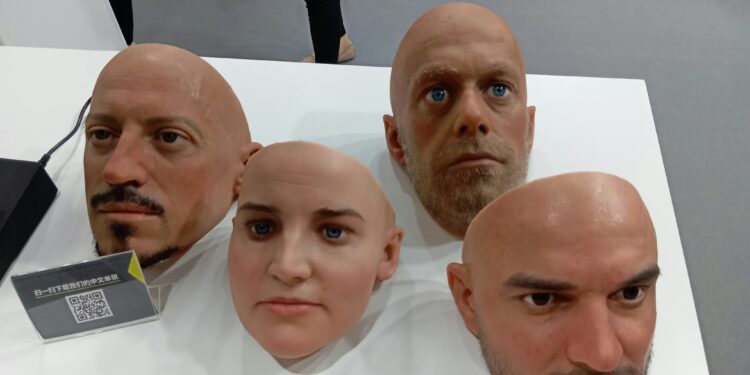Identifying, Combating, and Preparing for the Era of Synthetic Media
How would you react if you saw a video of your CEO seemingly ordering a transfer of company funds to an unknown account? Or if you heard a recording of a political leader making inflammatory statements they never actually uttered? These scenarios, once relegated to the realm of science fiction, are now increasingly possible and increasingly dangerous thanks to the rise of deepfakes.
Deepfakes, short for deep learning fakes, are AI-generated synthetic media that can realistically mimic a person’s appearance, voice, and actions. Using sophisticated algorithms, deepfakes can convincingly swap faces in videos, generate entirely new audio recordings, and create fabricated scenarios that are nearly indistinguishable from reality.
What was once the domain of skilled technicians and well-funded organizations is now becoming increasingly accessible to anyone with a computer and the right software. As the technology matures, so does the potential for misuse.
Deepfakes represent a significant and evolving threat to both cybersecurity and public trust, demanding proactive defense strategies that combine technological innovation, policy reform, and heightened public awareness. The ability to convincingly manipulate audio and video has the potential to disrupt cybersecurity practices and spread misinformation at a scale never seen before.
The potential for misuse of deepfake technology extends across various sectors, posing significant risks to cybersecurity, national security, and even individual reputations.
Impact of Deepfake on Cybersecurity and National Security:
- Social Engineering Attacks: Deepfakes amplify the effectiveness of social engineering attacks. A convincingly fabricated video of a trusted colleague or executive directing an employee to take a specific action, such as transferring funds or revealing sensitive data, can be incredibly persuasive. The visual element adds a layer of authenticity that traditional phishing emails lack, making it far more likely to succeed. Imagine a deepfake video call where an IT support person asks for login details under false pretenses.
- Business Email Compromise: Deepfake audio recordings, simulating the voice of a CEO or CFO, can be used to authorize fraudulent wire transfers. These attacks exploit the trust-based relationships within organizations and can result in significant financial losses. The subtlety of mimicking speech patterns and vocal nuances makes it incredibly challenging to detect in real-time.
- Compromising Reputations: Deepfakes can be employed to create scandalous or damaging content that harms the reputation of individuals and organizations. This could involve creating fake videos showing a public figure engaging in unethical or illegal behavior, leading to reputational damage and potential legal repercussions. The speed at which these fabricated narratives can spread online further exacerbates the problem.
- Political Disinformation: The use of deepfakes to spread false information and manipulate public opinion during elections or political crises poses a grave threat to democratic processes. Fabricated videos of candidates making controversial statements or engaging in illicit activities can sway voters and undermine the legitimacy of electoral outcomes. This can lead to political instability and societal unrest.
- Diplomatic Incidents: Creating fake videos or audio recordings of political leaders making inflammatory statements can trigger international conflict and damage diplomatic relations between nations. Such deepfakes could be strategically released to incite mistrust and hostility, leading to potentially devastating consequences.
- Erosion of Trust: The proliferation of deepfakes erodes public trust in legitimate news sources and institutions. When people become unsure of what to believe, it creates a climate of uncertainty and cynicism, making it more difficult to discern truth from falsehood. This can weaken social cohesion and undermine the foundations of democracy.
- Espionage: Deepfakes can be used to impersonate individuals for espionage purposes. By creating a convincing deepfake identity, intelligence agencies or malicious actors could gain access to sensitive information or infiltrate secure networks.
In 2019, a deepfake video of Nancy Pelosi was slowed down to make her appear drunk and incoherent, illustrating how even rudimentary manipulation can spread misinformation. As deepfake technology matures, we can anticipate more sophisticated attacks targeting high-value individuals and critical infrastructure. Imagine deepfake-generated instructions to control critical systems, or fake biometrics used to bypass security.
How to Identify Deepfakes
- Eye Blinking: Historically, AI models struggled to accurately render natural eye blinking patterns. While this is improving, keep an eye out for a lack of blinking or unnatural blinking frequency.
- Lip Syncing Issues: Discrepancies between lip movements and the spoken audio can be a telltale sign. Pay close attention to whether the words spoken match the visible lip movements, especially in segments with rapid speech.
- Unnatural Lighting or Shadows: Inconsistencies in lighting and shadows, particularly around the face, can indicate a manipulated image or video. Look for shadows that don’t align with the apparent light source or unnatural color casts.
- Geometric Inconsistencies: Warping or distortions in the face, body, or background can be subtle but revealing. Pay attention to unnatural smoothing of skin, blurring around the edges of the face, or any unusual distortions in the overall image.
- Source Verification: Scrutinize the source of the video or audio. Is it a reputable news organization, a verified social media account, or an anonymous source? Be wary of content shared without clear attribution.
- Multiple Sources: Does the information align with reports from multiple independent and reputable news sources? If the claim is only being reported by a single, unverified source, it should raise red flags.
- Emotional Manipulation: Be skeptical of content designed to evoke strong emotions, such as anger, fear, or outrage. Deepfakes are often crafted to trigger an emotional response and bypass critical thinking.
- Fact-Checking: Utilize reputable fact-checking websites and organizations to verify the information. These resources can help debunk false claims and identify manipulated media.
Combating the deepfake threat demands a multi-faceted approach. Technological advancements in detection, coupled with responsible policy frameworks, enhanced media literacy, and global collaboration, are essential. As consumers of information, we must cultivate a critical eye, verifying sources and questioning the authenticity of what we see and hear. By embracing vigilance and supporting efforts to combat deepfakes, we can safeguard ourselves and our society from the insidious effects of AI-generated disinformation.




































